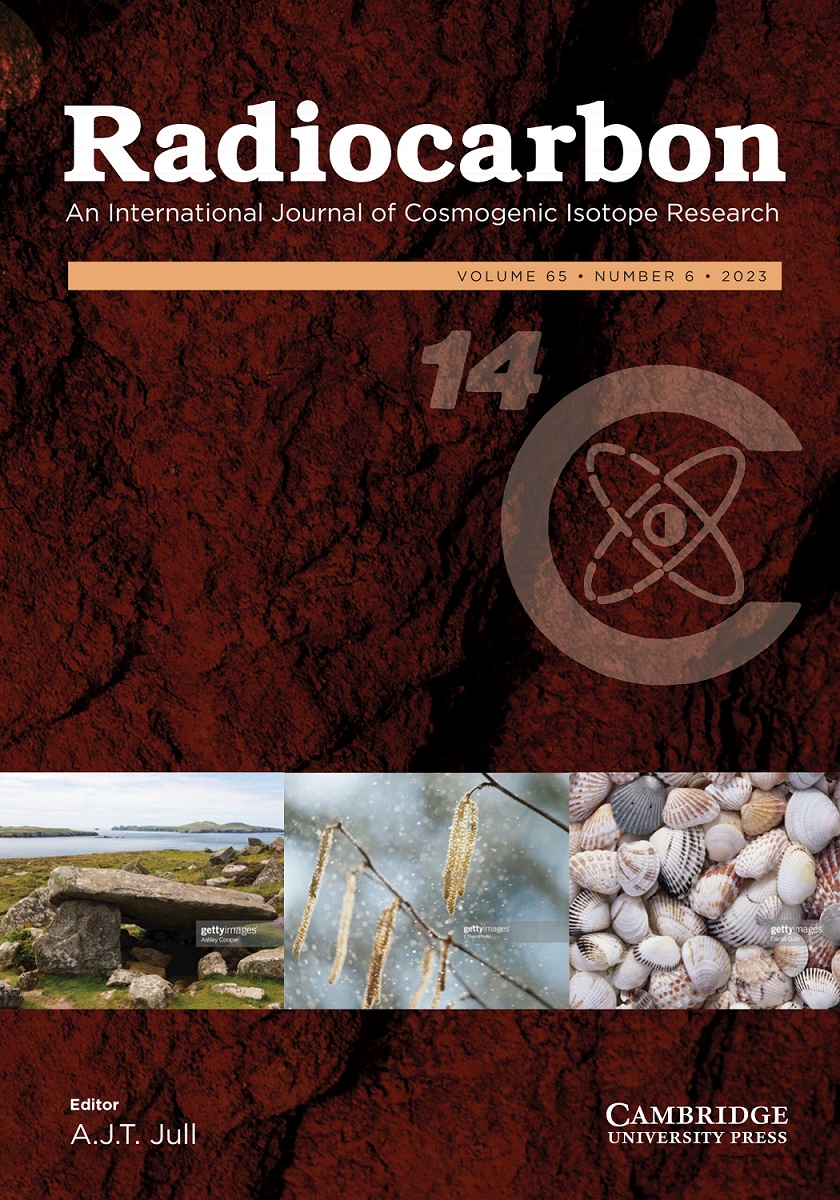SQUEAKY CLEAN CELLULOSE: COMPARING PRETREATMENT EFFECTIVENESS ON SINGLE TREE RINGS AND WOODEN LATHS
IF 1.3
3区 地球科学
Q2 GEOCHEMISTRY & GEOPHYSICS
引用次数: 0
Abstract
Obtaining accurate radiocarbon (吱吱作响的洁净纤维素:比较单个树环和木板条的预处理效果
从木材样本中获取准确的放射性碳(14C)结果需要提取纤维素。在过去,提取纤维素需要使用不同的方法组合,包括酸化漂白、酸-碱-酸和强碱。在大多数分析中,这往往是一项耗时的工作,尤其是需要从木材样本中提取单环同位素年代学时更是如此。利用 14C 和傅立叶变换红外光谱(FTIR),我们测试了四种不同的预处理方法,以确定它们生成高质量纤维素的能力。然后,我们对最佳方法进行了调整,确定了一种用于预处理多环木板条的方法。与 Bomb20 北半球 1 区曲线相比,碱-酸-碱-酸-漂白+强碱(BABAB+)和 BABAB 的序列产生了最准确的结果,Δ14C 的平均差异分别为 1.3‰ 和 5.8‰。对这些方法进行调整后,可对整块木板条进行预处理,傅立叶变换红外光谱(FTIR)结果比较表明,调整后的 BABAB+ 和 BABAB 所产生的高质量纤维素可与单独预处理的环相媲美。对木板条样本进行预处理有可能使一周内可预处理的树环数量增加一倍以上。这大大缩短了制作长树龄年表的时间。
本文章由计算机程序翻译,如有差异,请以英文原文为准。
求助全文
约1分钟内获得全文
求助全文
来源期刊

Radiocarbon
地学-地球化学与地球物理
CiteScore
16.20
自引率
6.00%
发文量
85
审稿时长
6-12 weeks
期刊介绍:
Radiocarbon serves as the leading international journal for technical and interpretive articles, date lists, and advancements in 14C and other radioisotopes relevant to archaeological, geophysical, oceanographic, and related dating methods. Established in 1959, it has published numerous seminal works and hosts the triennial International Radiocarbon Conference proceedings. The journal also features occasional special issues. Submissions encompass regular articles such as research reports, technical descriptions, and date lists, along with comments, letters to the editor, book reviews, and laboratory lists.
 求助内容:
求助内容: 应助结果提醒方式:
应助结果提醒方式:


